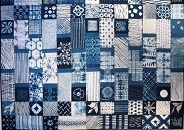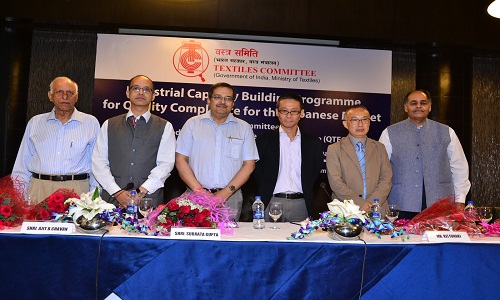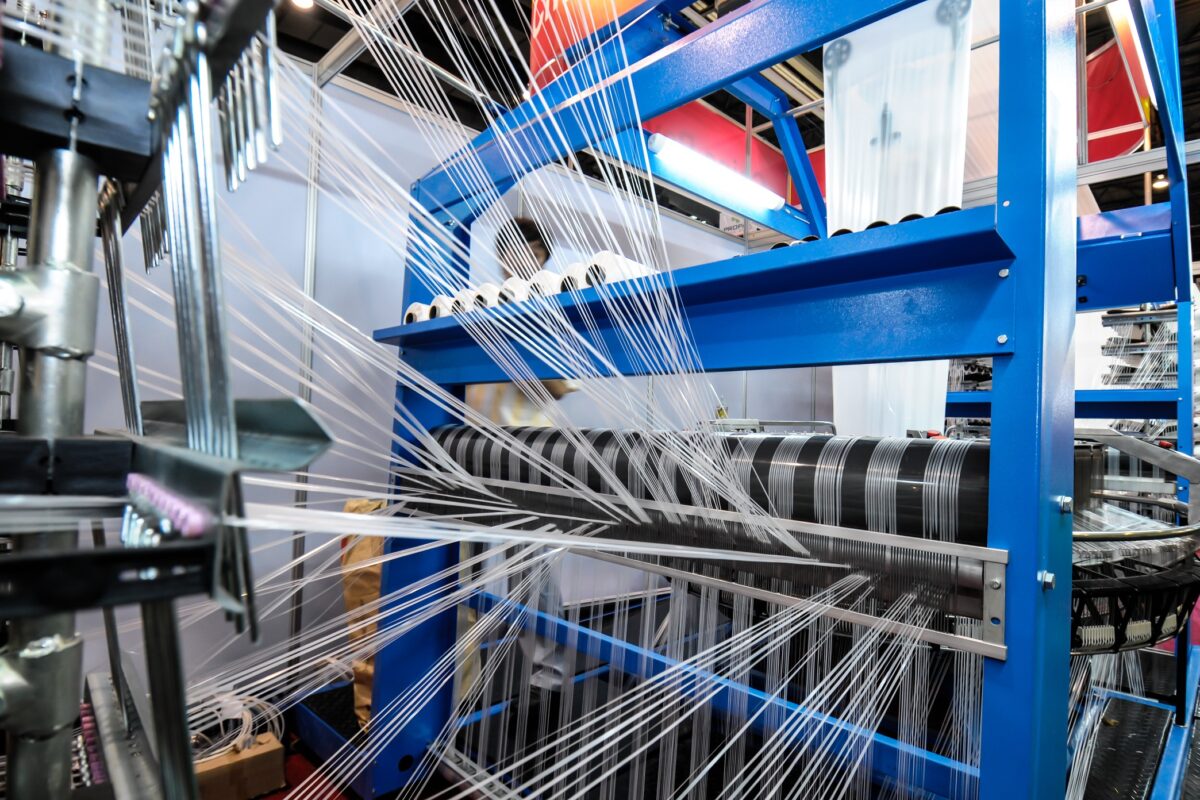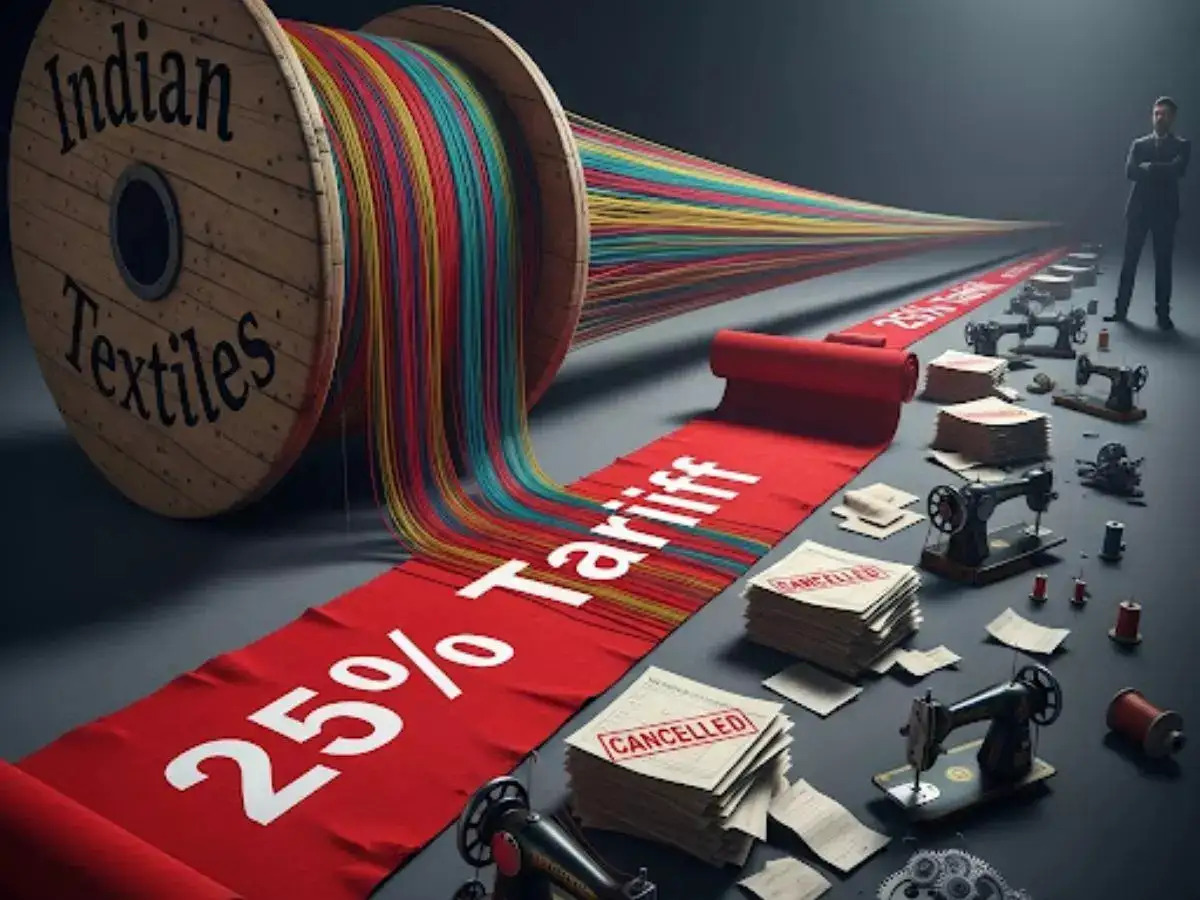FW
Max Mara and Woolmark have developed an innovative wool denim line. Max Mara has always chosen Merino wool as the fiber of excellence for its collections and this season pushed the boundaries on traditional uses of wool - such as fine tailoring, heavy coats and knitwear - to showcase a different approach for the fiber and celebrate its innate versatility.
The brand has utilised innovative 100 per cent wool denim fabrics that replicate the look and style of traditional denim - retaining the traditional 3/1 weave, but have added benefits thanks to the natural qualities of merino wool, including increased softness, warmth and resistance to wrinkles.
The twisted, strong wool yarns have been dyed with ecological dyes to imitate natural indigo and have been tested against the stringent guidelines to gain the Woolmark certification.
Merino wool is a luxurious, natural fiber and Max Mara’s latest autumn/winter collection highlights wool’s modernity and global relevance in high-end fashion. Woolmark has provided Max Mara in-depth training and education on the natural benefits and innate versatility of merino wool. The two brands have planned a global road show that will cover Milan, Moscow, London, Sydney and Beijing.
Woolmark is the global authority on wool.
The largest US retail associations called on new Trade Representative Robert Lighthizer to support the North American FTA aiming to salvage an accord that has come under fire from his boss. Leaders of the American Apparel and Footwear Association, the National Retail Federation, Retail Industry Leaders Association and US Fashion Industry Association sent a letter to Lighthizer on urging him to tread lightly on the 23-year-old pact.
Lighthizer was sworn in, clearing the way for the administration to seek an overhaul of NAFTA. President Donald Trump called the treaty a “disaster” during the election campaign and has threatened to withdraw from the agreement with Mexico and Canada if renegotiated terms aren’t favorable enough.
In a draft letter circulated in March that laid out its goals, the administration told lawmakers it wanted to strengthen the US manufacturing base and “level the playing field” with its NAFTA trading partners on tax treatment. Retailers, which rely heavily on imports, have opposed any changes that would tax imports at a higher rate.
Steve Lamar, Executive VP of the AAFA, in an earlier interview had said the company’s approach is if you look across the textile, apparel and footwear industry, there’s a broad consensus that NAFTA works that it creates jobs that supports workers and communities on both sides of the border.
Jonathan Gold, VP of supply-chain and customs policy at the NRF pointed out saying the ultimate concern for the business community at large is failure to come to a deal that ends in the US pulling out of NAFTA. An imperiled NAFTA comes during a challenging time for apparel retailers. Falling prices, increased competition and a lack of style trends have made it harder for clothing companies to maintain sales and profit.
If the trade deal changes, apparel trade groups say the industry could be faced with rising costs and another blow to its already-fragile profit margins. Mexico is the largest Latin American supplier of apparel products to the US and the fifth-biggest worldwide behind countries like China and Vietnam according to the US department of commerce.
The next edition of ITMA will be held from June 20 to 26, 2019 in Spain. This is the world's largest textile and garment technology exhibition. Held every four years since 1951, it showcases the entire textile and garment making manufacturing chain as well as raw materials.
A core value of ITMA is to be relevant to the textile and garment making industry and end-users. As such, it is always exploring new ways to reinvent and to make its platform vital to all stakeholders by offering an integrated sourcing experience. During every ITMA, manufacturers are able to have meaningful discussions with their partners and customers on innovative ideas that offer users a competitive advantage.
Due to the favorable response received from fiber and yarn exhibitors and visitors at the last two ITMA shows, ITMA 2019 will include woven, nonwoven and knitted fabrics in the fiber and yarn exhibit sector. In addition, digital and screen printing inks have been classified in the printing chapter. This will allow ink producers to be in the same hall as printing machinery manufacturers so that visitors can easily source technology and consumables. A new service introduced for the benefit of machinery buyers is leasing and financing services.
Over the years, the exhibition show profile has evolved in keeping with industry trends and challenges. It now features the entire textile and garment making production chain, including raw materials.
"India’s textile and clothing industry is looking to push up exports to Japan. And in line with this the government is looking to help the Indian textile trade and industry for better understanding of quality culture in Japan. The aim is to meet Japanese quality standards in order to boost exports. The Indian government signing a MoU with Japan Textile Products Quality and Technology Centre (QTEC) to establish and encourage both quality compliance activities jointly and organize collaborative ‘Industry Capacity Building Programme’."

India’s textile and clothing industry is looking to push up exports to Japan. And in line with this the government is looking to help the Indian textile trade and industry for better understanding of quality culture in Japan. The aim is to meet Japanese quality standards in order to boost exports. The Indian government signing a MoU with Japan Textile Products Quality and Technology Centre (QTEC) to establish and encourage both quality compliance activities jointly and organize collaborative ‘Industry Capacity Building Programme’. In line with this, one-day workshops, across nine major textile centres spread across India are being organised. New Delhi hosted one ICBP meet on May 17.
Focus on trade, meeting Japan’s standards
Subrata Gupta, Joint Secretary, Ministry of Textiles was the guest of honouur. In his address Gupta spoke on Japan’s quality consciousness and said India’s manufacturing capacity is enormous but exports to Japan are minimal in textiles. He further said by changing mindset companies can match up op Japanese quality requirements and enhance the quantum of textiles exports.
Vijay Mathur, Additional Secretary General, AEPC, in his special address, presented a case study of Neetee Clothing, Gurgaon, who had successfully met both quality and process requirements of Japanese market.
In this inaugural speech, Ajit B Chavan, Secretary, Textiles Committee, gave a brief introduction on the background of the program. He said India is a major global textile economy with textile exports worth $40 billion. India ranks 4th and 5th among the top 10 textiles and clothing exporting countries respectively. India’s top exports destinations are Europe and the US with total exports touching $16.78 billion in 2016. Japan on the other hand is a major textile importing country with 97 per cent of its textiles being sourced through imports mainly from China (62.11 per cent) followed by Vietnam (10.56 per cent), Indonesia (4.12 per cent) and Bangladesh (2.76 per cent). While India’s exports to Japan were a mere $429.4 million, amounting to 1.24 per cent share.
The reason for low exports to Japan is lack of awareness about Japanese textile quality requirements among Indian textile manufactures. And the MoU was signed between Textiles Committee, India and Japan Textile Products Quality and Technology Centre (QTEC), in November 2016 to look into this issue. The MoU is expected to herald a new beginning in international trade of textile and clothing between India and Japan.
Speaking about the importance of quality in international trade, Kartikay Dhanda, Director, Textiles Committee said trade and industry appreciated the initiative taken by the Indian government and the Textile Committee which will bring in sizeable difference in business.
Toshiki Tasaka, Director, Overseas Coordination Department, QTEC, Kei Funaki, ASEAN and South Asia Regional Manager, Overseas Coordination Department, QTEC spoke on the difference of quality requirements between western buyers’; ‘quality and compliance in Japan and JIS Overview’; and ‘banned substance in Japanese Market’.
The Textiles Committee of India serves textile trade and industry by providing various services including testing, inspection, market research, total quality management and more. With 28 offices and 19 state of art laboratories it has a nationwide network in all major textiles centers of India.
On similar lines, Japan’s QTEC has been providing world class facilities to Japan’s textile industry for quality evaluation, standardization, technology evaluation, conformity assessment, technical guidance and education, factory certification.
Union textile minister Smriti Irani is back on ‘WearHandloom' that has been trending on Twitter. A selfie in a cotton sari, with the hashtag 'Cotton’s-Cool', and asked netizens to post their selfies and tag five friends was tweeted by her on Tuesday. The hashtag started trending, with people still tweeting their pictures in cotton attire.
Irani has kept a low profile in the textiles ministry, her Twitter campaigns seem to be a hit, enforcing her image as a social media savvy politician. It's the second twitter campaign of Irani which has managed to get people talking, even as she has consciously stayed away from traditional media, preferring to be visible on twitter and Instagram.
Irani's #CottonIsCool campaign certainly got the attention of twitterati. Following up her selfie with posts in which she termed cotton as a "celebration of Indian summer and the cotton industry", Irani had celebrities and regular folk, not to mention her Cabinet colleagues posting pictures of themselves in cotton wear.
The list had names like Advaita Kala, Amish Tripathi, Rajat Sharma, Gul Panag, Randeep Hooda, Anita Dongre, Vir Sanghvi, Virender Sehwag, Mohammed Kaif, Manish Malhotra, Kirron Kher, Hema Malini and Vijender Singh. Those from the government included Rajiv Pratap Rudy, Kiran Rijuju, Piyush Goyal, Manohar Lal Khattar, Swapan Dasgupta etc. Minister for railways Suresh Prabhu and minister of state for civil aviation Jayant Sinha expressed their support as well, with Prabhu calling it his personal choice.
Mothercare reported its latest full-year results and had good news with the second half having returned to underlying profit in its core UK operations. The mother and child specialist’s focus on digital also helped position it for future growth with 41 per cent of its sales now coming online after a 7.8 per cent rise last year.
UK comparable sales rose 1.1 per cent, margin were up 54bps, 70 per cent of the store estate is now in the newly refurbished club format, 10 new website opened around the world and international total sales growth was 10.6 per cent.
CEO Mark Newton-Jones says the company is now in the third year of its turnaround. He further added following a difficult start to the year, the UK recovered in the second half, returning to underlying profit for the first time in six years. International markets showed signs of recovery with strong growth in Russia and Indonesia, and a sales recovery in China, albeit the country is yet to return to positive cash profit.
Digital revenue is currently on a growth trajectory to be over half of its turnover with 83 per cent of traffic coming from mobile. Store numbers are being reduced steadily. Newton-Jones stressed stores still count, outlining a vision that could be repeated across the retail sector as the digital revolution continues.
The Confederation of Indian Textile Industry (CITI), the apex body representing the entire textile industry in the country, has elected its new office-bearers at its committee meeting held recently. J Thulasidharan, Managing Director of Coimbatore-based The Rajaratna Group of Mills, has been elected the new chairman of the apex body.
Thulasidharan, who was the Vice Chairman of CITI till now, has also served as the chairman of The Southern India Mills’ Association (SIMA), president of Open End Spinning Mills Association and SIMA Cotton Development and Research Association (SIMA CD&RA). He is also the president of Indian Cotton Federation, formerly known as South India Cotton Association who holds directorship in Coimbatore Capital and Coimbatore Commodities.
CITI is the apex body representing the entire textile industry in the country. Sanjay K Jain, Managing Director of T T, a vertically integrated textiles company (fibre to fashion) having its manufacturing units in various States of the country is the new Vice Chairman. T Rajkumar has been elected the deputy chairman
UK industrial thread giant Coats’ sales in the four months ending April went up seven per cent at constant exchange rates and four per cent on an organic basis. Reported sales were up two per cent in the apparel and footwear sub-division and 17 per cent in performance materials. But the crafts division saw sales falling three per cent.
Craft sales fell largely due to the business disruption caused by the tornado strike at the distribution centre in the US. However, the impact of lost profits and incremental costs of re-establishing operations there are expected to be covered in full by the group’s insurance cover.
Coats is an UK industrial threads giant. The four per cent growth in total group sales on a reported basis, which is lower than the five per cent constant exchange rate growth, reflects the stronger dollar, primarily against the Turkish lira, Mexican peso and Egyptian pound, compared to the same period in 2016.
The good results came despite continued mixed demand from clothing retailers and manufacturers. An improvement in the US consumer durables markets helped as also the contribution of Gotex, acquired in June 2016.
Coats has had a strong start to the year and now expects to deliver 2017 full-year results ahead of expectations.
Burberry has had a 21 per cent underlying drop in full-year pretax profit. Burberry is a British luxury fashion house known for its trench coats. Last year Burberry benefited from the drop in value of pound following the vote to leave the EU, boosting operating profits by nearly 130 million pounds. For the full year, its adjusted pretax profit came in at 462 million pounds, in line with expectations and up ten per cent on a reported basis but down 21 per cent when the impact of currency is stripped out.
Revenue for year ending-March fell two per cent on an underlying basis to 2.8 billion pounds. Pretax profit is expected to edge up to 468 million pounds for the current year.
The brand is trying to refresh its product range, become more efficient and improve the performance of its stores, where its space delivers less sales than rivals.
Burberry was founded in 1856 and is a leading luxury brand with a global business. The assortment covers a broad spectrum from classic trench coats to extravagant, innovative fashion collections. The range covers men’s wear, women’s wear, children’s wear, coats, dresses, shoes, accessories, bags, scarves, beauty and fragrance.
Azerbaijan is expected to increase its silk production two or three times this year. In 2016, Azerbaijan produced 71 tons of silk. The history of sericulture in Azerbaijan dates back to almost 1500 years. When it comes to silk in Azerbaijan, the first place that comes to mind is the ancient city of Sheki, which was once considered the largest center for the production of silk and silk farming in the Middle Ages. Delicate fabrics, beautiful clothes, and colorful kelagayis (silk headscarves) manufactured by Sheki craftsmen from raw silk were exported to foreign countries, so the city became famous for its silk throughout the world.
In the Soviet period, Azerbaijan ranked second after Uzbekistan for the production of silk cocoon, but was considered first in fiber quality. The country annually produced 7,800 tons of raw cocoons in 1960 to 1970.
Azerbaijan's Shirvan region started becoming known for its silk industry as early as the ninth century. By the 11th and 12th centuries, the silk produced in Shirvan was already famous throughout Russia and Western Europe. Silk cloth was exported to Italy by Venetian and Genoese merchants who maintained commercial offices along the shores of the Caspian.
There are three main species of mulberries - white, red and black – and all of them are widely cultivated throughout Azerbaijan.













